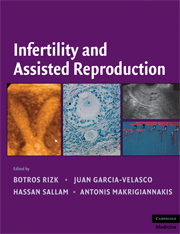Foreword
Published online by Cambridge University Press: 04 August 2010
Summary
This text on infertility and assisted reproduction is truly international. There are authors from 18 nations. This reflects the widespread availability of assisted reproductive technology (ART) and indicates that experts are found worldwide. Indeed, in a compilation of legislation and guidelines concerning ART, sponsored by the International Federation of Fertility Societies and published as a supplement to Fertility and Sterility in 2007 under the title “Surveillance 07,” it was noted that two-thirds of the world's population lived in countries where ART is available. To be sure, it needs to be added that accessibility within various countries varies widely.
“Surveillance 07” also found that there was a wide variation among nations in what society really wished to survey and control. Indeed, this variation has had some interesting and unexpected consequences. For example:
In Italy, cryopreservation of fertilized eggs is prohibited. This has stimulated investigation into the improvement of cryopreservation or vitrification for oocytes (see chapter by Porcu).
In Belgium, among those qualified for insurance coverage provided by the government, no more than a single fertilized egg can be transferred in the first IVF attempt, provided the patient is younger than 36 years of age. This has provided and given stimulus to the evaluation of elective single embryo transfer (eSET). It turns out that eSET offers a good pregnancy rate and largely eliminates multiples (see chapter by Gerris).
The complete physician does not practice medicine like a cook who depends on a cookbook to prepare a special dish.
- Type
- Chapter
- Information
- Infertility and Assisted Reproduction , pp. xix - xxPublisher: Cambridge University PressPrint publication year: 2008



